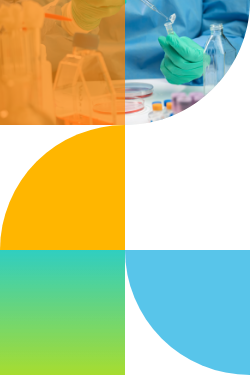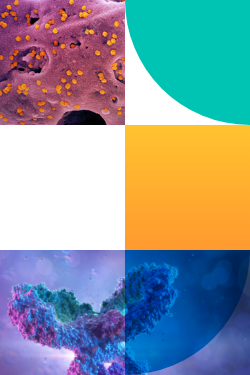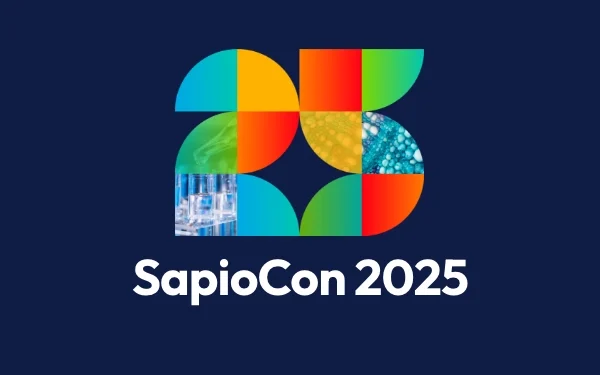

Lab Informatics Resources
Free tools and resources on science-aware™ lab informatics.
Bridging from Complexity to Clarity: A Q&A with Kassandra Peterson on Empowering Users through Knowledge Management
In this Q&A session, we delve into the journey, insights, and strategies of Kassandra Peterson, Knowledge Manager and Technical Writer at Sapio Sciences, whose expertise in simplifying complex platforms empowers users to achieve impactful outcomes.
1. Can you share what your primary role at Sapio Sciences entails?
My primary role is to advocate for adopting the Sapio System by ensuring it delivers maximum value to our customers and users. This means transforming a complex, feature-rich platform into an intuitive tool that provides critical, actionable insights. I achieve this by crafting user-centric communication and training materials that address real-world needs in a practical and accessible way.
2. How do you approach technical writing within your role?
I often compare technical writing to investigative journalism. I ask questions like, Why is this feature located here? and How does enabling this checkbox benefit the end user? By uncovering these answers, I create training content that demystifies processes and empowers users. My goal is to connect the dots in a way that makes the platform feel approachable and useful.
3. What key strategies do you use to make your training materials user-friendly?
Accessibility and practicality are at the core of my strategy. I focus on best practices, templates for solving common pain points, and clear, concise explanations. I also ensure that the materials guide users through a seamless onboarding experience, helping them adopt the system quickly and effectively.
4. What inspired your user-centered approach to knowledge management?
Early in my career, I worked as a Scientific Education Specialist, where I developed biology education programs for at-risk youth. That role instilled in me the importance of breaking down complex topics in ways that reduce barriers to understanding. Whether I’m developing IB Biology curricula or creating LIMS and ELN training materials, the goal is the same: equip users with the tools and knowledge they need to succeed.
5. How does your scientific background influence your work today?
My background in molecular virology and microbiology has shaped my approach to problem-solving and communication. Scientific research requires precision, clarity, and the ability to convey findings effectively—skills that translate seamlessly into technical writing. Whether I’m explaining a new feature or creating a guide, I aim to communicate with both accuracy and empathy.
6. You’ve held a range of roles in education, software configuration, and content creation. How have these experiences shaped your current role?
Each role taught me different facets of enablement and education. As a software configuration manager, I learned the importance of system customization and user workflows. In marketing content creation, I honed my storytelling skills to make complex concepts engaging. My experience with learning management systems reinforced the value of structured, learner-centric design. These experiences collectively inform how I approach knowledge management—balancing technical accuracy with user empowerment.
7. What role do templates and best practices play in your training design?
Templates and best practices streamline adoption and promote consistency. They act as starting points that address common scenarios and challenges. Instead of users needing to build solutions from scratch, they can leverage proven approaches that align with their goals. This not only speeds up onboarding but also fosters confidence and independence.
8. How do you measure the success of your knowledge and training initiatives?
Success is measured by reduced onboarding and implementation times, increased platform adoption, and positive user feedback. I pay close attention to metrics related to customer satisfaction and time-to-value. If users can navigate the system with ease and achieve their objectives efficiently, that’s a clear indicator of success.
9. Can you share a memorable achievement in your career?
One standout moment was developing a biology curriculum that doubled the number of International Baccalaureate diploma recipients at my school. Seeing students thrive because they had the resources and support to succeed reinforced my commitment to education and enablement—a commitment that continues to drive my work today.
10. What advice would you give to someone aspiring to enter the field of technical writing and knowledge management?
Stay curious and empathetic. Technical writing isn’t just about documenting features—it’s about understanding the user’s journey and anticipating their needs. Ask questions, seek feedback, and continuously refine your content. The more you understand your audience, the more impactful your work will be.
11. What excites you most about the future of knowledge management and user enablement?
The evolution of technology and AI presents exciting opportunities to enhance user experiences. As platforms become more advanced, the need for intuitive, impactful knowledge materials will only grow. I’m passionate about staying at the forefront of these innovations and finding new ways to empower users.
Thank you, Kassandra, for sharing your insights and experiences! Your dedication to simplifying complex systems and fostering user success is truly inspiring.


